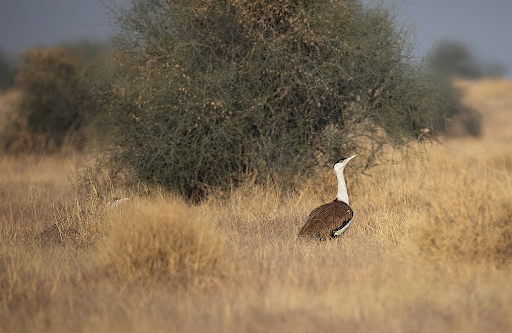




Source: INDIANEXPRESS
Disclaimer: Copyright infringement not intended.
The Odisha government notified Similipal Tiger Reserve as a national park making it the 107th national park of India and the second national park in Odisha after Bhitarkanika.
This declaration was pending for 45 years since its initial proposal in 1980.
|
Feature |
Details |
|
Location |
Mayurbhanj district |
|
Total Area |
845.70 sq km (national park area); part of 2,750 sq km Similipal Tiger Reserve |
|
Ecosystem Type |
Tropical moist deciduous, sal forests, semi-evergreen forests |
|
Key Fauna |
Royal Bengal Tigers (pseudo-melanistic), Asian elephants, leopards, mugger crocodiles, sambar, deer |
|
Key Flora |
104 species of orchids; dominant Sal trees |
|
Bird Species |
Over 360 bird species |
|
Unique Feature |
World’s only wild population of melanistic (pseudo-melanistic) tigers |
|
UNESCO Status |
Part of the Similipal Biosphere Reserve (recognized in 2009) |
|
Tiger Population |
40 tigers as per latest count |
|
Elephant Population |
Home to 25% of Odisha's elephant population |
Due to a genetic mutation Similipal tigers have higher levels of melanin giving them darker coats with thick black stripes and less yellow often called pseudo-melanistic.
Nowhere else in the world do such wild melanistic tigers naturally exist.
Human activities like grazing, agriculture, and commercial exploitation are completely prohibited in the national park area (not the case in a wildlife sanctuary).
National park status offers the highest degree of legal protection under the Wildlife Protection Act, 1972.
Similipal now enjoys multiple conservation labels — Tiger Reserve, Elephant Reserve, Biosphere Reserve and National Park.
Focused efforts to protect the habitat, control poaching, improve surveillance and increase tiger numbers.The declaration aims to uplift the aspirations of tribal communities through eco-tourism, skill development and infrastructure upgrades.
|
Measure |
Details |
|
Greater Similipal Landscape Programme |
Securing Similipal and ecological corridors using AI-powered surveillance systems (camera towers, trail guard systems), V-SAT communication, and dedicated security forces. |
|
Tiger Genetic Diversification |
Two female tigers brought from Tadoba Andhari Tiger Reserve, Maharashtra, to strengthen genetic diversity and aim for 100 tigers by 2036. |
|
Ama Similipal Yojana |
Integrated scheme for local livelihood enhancement, eco-tourism, cultural tourism, health, education, and basic infrastructure development. |
|
Aspect |
Similipal National Park |
Bhitarkanika National Park |
|
Location |
Mayurbhanj District |
Kendrapara District |
|
Area |
845.70 sq km |
145 sq km |
|
Ecosystem Type |
Tropical moist deciduous and semi-evergreen forests |
Mangrove forests and estuarine ecosystem |
|
Key Species |
Melanistic tigers, Asian elephants, leopards, orchids |
Saltwater crocodiles, Olive Ridley turtles, migratory birds |
|
UNESCO Status |
Biosphere Reserve (part of Similipal Biosphere Reserve) |
Ramsar Site (Wetland of International Importance) |
|
Key Conservation Focus |
Tiger and elephant conservation |
Crocodile conservation and mangrove ecosystem protection |
|
Year of National Park Notification |
2025 (April 24) |
1998 |
|
Human Activity Regulation |
Strict (no human activity allowed) |
Limited human activity allowed in some areas |
|
Distinctive Feature |
World’s only wild melanistic tigers |
India’s second-largest mangrove ecosystem, breeding ground for saltwater crocodiles |
Sources: INDIANEXPRESS
|
PRACTICE QUESTION Q.Discuss the ecological, genetic, and socio-economic significance of the declaration of Similipal as a National Park. How does it strengthen India's conservation efforts while balancing developmental needs? 250 Words. |






© 2026 iasgyan. All right reserved